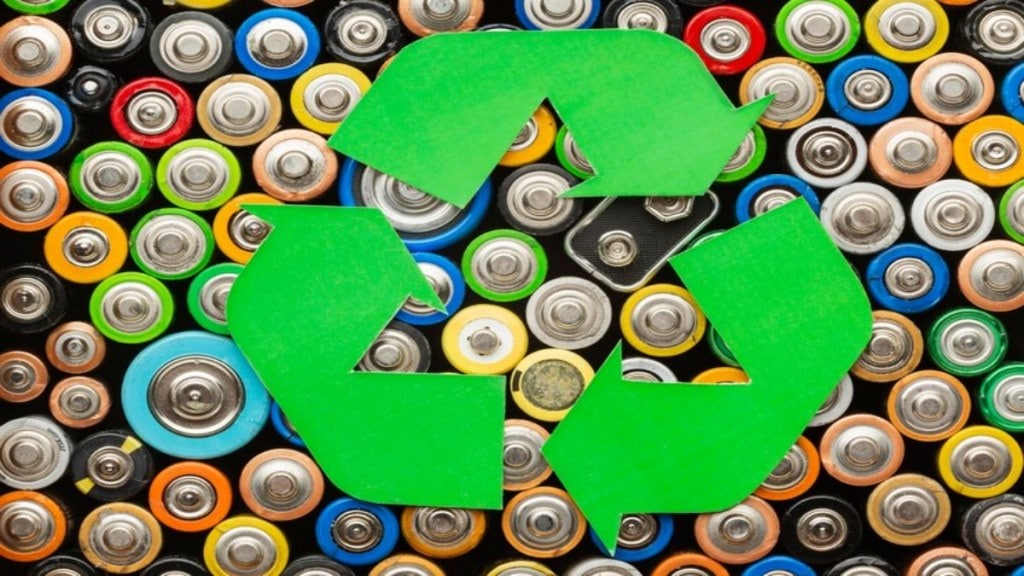By Shubham Vishvakarma
In the fast-evolving landscape of electric mobility, India stands at the forefront of a revolutionary era, with its electric vehicle (EV) market witnessing unprecedented growth. This surge has not only fortified India’s commitment to a clean energy transition but has also laid the foundation for the nation to emerge as a leader in the $6 billion global lithium-ion battery recycling market. With over 2.3 million electric vehicles currently on the roads and a bold target of achieving 100% electrification for two- and three-wheelers by 2030, India’s lithium-ion battery recycling sector is poised to play a pivotal role in shaping a sustainable future.
A significant portion of these 2.3 million electric vehicles has hit the roads only in the last two to three years. This rapid growth is indicative of ambitious electrification plans and a steadfast commitment to the Zero Emissions Vehicle Declaration. As a consequence, India anticipates a substantial influx of retired lithium-ion batteries in the coming years. Projections estimate that by 2030, the country will have approximately 128 GWh of lithium-ion batteries available for recycling, with 46% originating from electric vehicles alone. This presents a massive opportunity for India’s lithium-ion battery recycling sector not only to meet domestic demand but also to assert its dominance in the global market.
Recycling lithium-ion batteries has also become a critical component in India’s quest for self-reliance in the face of challenges such as the lack of reserves for raw materials like lithium, cobalt, and nickel. Recycling provides a sustainable pathway to unlock the value of retired batteries, thereby reducing dependency on imports. Globally, efficient recycling has the potential to significantly curb the annual demand for new mining activities, aligning with India’s commitment to environmental stewardship. However, despite having immense potential to change the face of the EV industry and support the country’s self-reliance goal, the lithium-ion battery recycling sector in India faces formidable hurdles that must be addressed to lead the global market. Presently, the country has limited recycling capacity, with only a few companies equipped with ultra-refining facilities. Establishing such facilities is capital-intensive, requiring substantial investments ranging from Rs 100-300 crore for end-to-end processing. Compounding these challenges is the absence of a robust domestic market, forcing recyclers to depend on the global market for both feedstock and selling their final products.
Hence, to spearhead the $6 billion global lithium-ion battery recycling market, India must undergo a strategic transition towards a circular economy approach. This involves not only scaling up recycling and refining capacity but also fostering domestic manufacturing of battery cells. Several Indian companies are already on the path to achieving this, with plans to produce lithium-ion cells within the next three to four years. Developing a comprehensive ecosystem that encompasses mining, recycling, and manufacturing will be crucial for India’s success in the global lithium-ion battery market.
Notably, efficient recycling is another focus area and implementation of clear labeling and data digitization systems can help achieve that. The proposed concept of a battery passport could serve as a unique ID for batteries, containing crucial details about the batteries chemistry, performance, health status, charging history, and safety issues. This data would aid in recycling decisions and establish the residual value of the battery, creating a more transparent and accountable system. Taking inspiration from countries like those in Europe that have introduced reforms requiring a carbon footprint declaration for batteries through a battery passports,India can enhance transparency, streamline recycling processes, and facilitate buyback deals for producers.
Aligning battery rules with evolving technologies and fostering an ecosystem supporting recycling and manufacturing is imperative for India’s; success in the global lithium-ion battery market. Coming to the Regulatory Impetus, the Battery Waste Management Rules introduced in 2022 marks a significant step forward for India. These rules mandate that 90% of discarded battery materials must be recycled and recovered by 2026. Furthermore, 20% of the recycled materials should find their way into new batteries by 2030. These forward-looking regulations emphasize responsible waste management and actively encourage the recycling industry to contribute to the circular economy. As India endeavors to achieve a 50% transition to renewable energy by 2030 and make substantial strides in electric vehicle (EV) adoption, the lithium-ion battery revolution is gaining momentum. A comprehensive and multi-faceted strategy is essential to effectively expand the infrastructure for battery recycling. In alignment with the government’s unwavering commitment to fostering indigenous research and development in battery technology, the imminent introduction of a comprehensive Production Linked Incentive (PLI) for battery recycling is poised to play a pivotal role.
This framework will provide incentives for the entire lifecycle, encompassing collection, transportation, and recycling processes, ensuring a rapid, fair, and competitive growth trajectory for the lithium-ion battery recycling sector. In conclusion, India’s lithium-ion battery recycling sector stands at the threshold of a transformative journey, positioning itself to lead the global $6 billion market. The escalating volume of retired batteries stemming from India’s expanding electric vehicle market presents both challenges and opportunities. Through concerted efforts to address infrastructure gaps, foster innovation, and embrace a circular economy approach, India has the potential not only to fortify its battery material security but also to emerge as a world leader in sustainable lithium-ion battery recycling. The pursuit of self-reliance in batteries necessitates collaborative endeavors from government bodies, private sector companies, and research institutions, paving the way for a cleaner and more sustainable future.



















